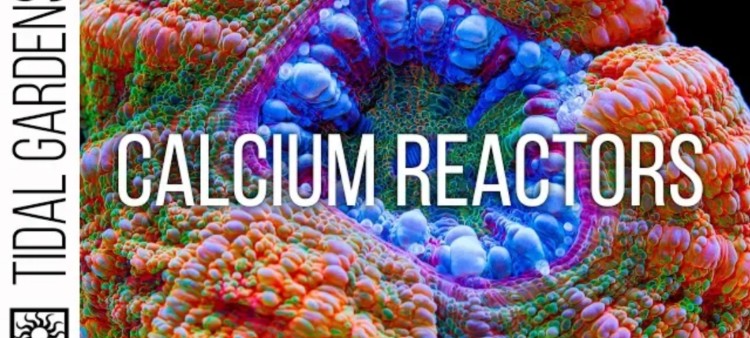Calcium Reactor Explained
- Jan 03, 2022
- Anshika Mishra
- 237 0 0

Water chemistry is a huge deal in reef aquariums as there are many methods to help maintain water quality. However, because there are so many options, it can be overwhelming at first glance, and it takes some time to figure out what they all do and what makes sense for your home aquarium.
So, let's look at the calcium reactors.
Right of the bat, that's a scary name. Do I need a reactor in my tank? However, it is not that much complicated. It is essentially a chamber that recirculates water and slowly dissolves calcium carbonate media.
By slowly re-introducing this water back into the aquarium, a calcium reactor helps maintain calcium and alkalinity levels. These two are major water chemistry parameters for stony corals and other tank inhabitants such as clams. The more stony corals in the reef, the higher their demand for calcium and alkalinity to continue growth, especially fast-growing stony corals such as Acropora.
The media is dissolved by slowly injecting carbon dioxide gas into the chamber. When CO2 is mixed into the water converts into carbonic acid. When the water inside the reactors becomes acidic, the media breaks down and releases calcium and alkalinity into the water, making it bioavailable to the tank inhabitants.
Unfortunately, this process is also happening in the ocean as carbon dioxide levels rise. So if you have even heard the term ocean acidification, that's what is being described.
The ocean itself is becoming more acidic and is preventing stony corals from growing or, worse, dissolving their skeleton while the coral is alive. It is part of why many of the reefs around the world are struggling or bleaching out altogether.
Most reefers like calcium reactors because they are fairly low-maintenance once they are set up, and they do a good job of maintaining calcium and alkalinity without the risk of crazy overdosing if something goes wrong.
Usually, if there is a malfunction, the reactor stops working. But, unfortunately, it doesn't just sport working, and it doesn't dump a year's supply of additives into your tank.
Calcium Reactor
Chamber
Usually, it is a large acrylic tube with a large access port to easily fill and refill media. However, the top must be secured to avoid leaks once the reactor is filled with water and recirculated. It accomplishes this with a large O-ring and thumbscrews around the entire circumference of the top plate.
The media used is aragonite which is a great source of calcium carbonate. You can use a mix of aragonite and old coral skeleton.
Once the reactor is filled, you set the top plate and screw it down. Ensure there is no dust or debris on the O-ring, or the reactor might leak. One quick way to tell is the ring's appearance if it is squished down nicely and doesn't appear to have any air gaps.
Pump
A calcium reactor requires two pumps, a feed pump, and a recirculating pump. It is important to get one strong enough to force water into the reactor while under a little bit of backpressure because as the media dissolves, it turns a little slushy, and also the output of the reactor is going to be stopped down to a controlled drip.
The pump that does all the heavy lifting is the recirculating pump. Most reactors take water from the top of the unit and send it to the reactor. As a result, the CO2 gets chopped up and diffuses through the media in a constant loop.
Regulator Valve
The CO2 portion of the system requires a tank and regulator and a needle valve to control the flow of the calcium reactor. It is a hidden cost of the reactor often aquarium price our a calcium reactor but fail to account for the CO2 portion.
It is usually a few hundred dollars for the tank and the regulator, depending on the size of the CO2 tanks and the quality of the CO2 regulator and needle valve.
The regulator for the hobby is fairly inexpensive compared to the very high-quality ones used by the freshwater planted tank folks. In any case, there is a connector for the CO2 on the reactor that goes to a bubble counter. The bubble countries a quick and easy visual reference for how much CO2 is going into the reactor. Shoot for about one bubble per second or less in some situations.
Is the Reactor Working?
To determine whether the reactor is working is to test the pH. Try to monitor the acidity of the water constantly. When the pH is lower than 7, the reactor is a milkshake, and if it is up there around 8, there is probably no CO2 flow at all, and either the needle valve needs to be tweaked, or the gas tank is empty.
Finally, the water leaves the reactor and heads back into the system through the effluent line. It is a little counterintuitive to send back low pH water into the system, but this helps boost the pH in the aquarium and add buffering stability.
When their reactors in the tank are running well, the pH will be at about 8.3, and the tank will have a steady levels of calcium and alkalinity.
Happy Reefing!






About author